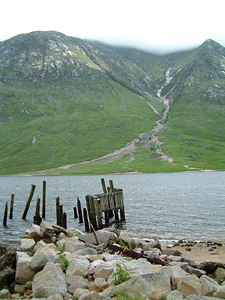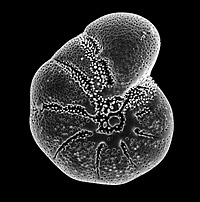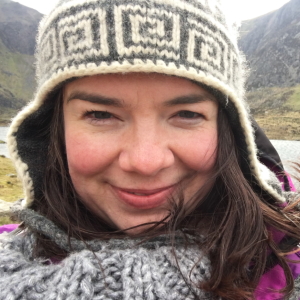Biography

I stayed on at the University of St Andrews to carry out postdoctoral research primarily on the EU FP6-funded project ‘Millennium’, where I generated high-resolution multi-proxy palaeoenvironmental data from Loch Sunart (a fjord) on the NW coast of Scotland.
During 2010, I worked as a Lecturer in Physical Geography and Manchester Metropolitan University and I started at Keele as a Lecturer in Physical Geography and Environmental Science in January 2011.
Research and scholarship
 My research interests lie in high-resolution (centennial to millennial-scale) shelf-sea palaeoceanography, marine palaeoecology and geochronology during the Holocene (last ~ 11,500 years) and late-Holocene (last ~ 2,000 years). Shelf-sea and marginal marine environments can provide an important link between deep ocean and terrestrial records and could help us understand land-ocean interactions and how our climate is modulated by the Atlantic Meridional Overturning Circulation. Recently, my research has moved into reconstructing Quaternary environmental change in Arctic Environments.
My research interests lie in high-resolution (centennial to millennial-scale) shelf-sea palaeoceanography, marine palaeoecology and geochronology during the Holocene (last ~ 11,500 years) and late-Holocene (last ~ 2,000 years). Shelf-sea and marginal marine environments can provide an important link between deep ocean and terrestrial records and could help us understand land-ocean interactions and how our climate is modulated by the Atlantic Meridional Overturning Circulation. Recently, my research has moved into reconstructing Quaternary environmental change in Arctic Environments.
I use both the chemical (stable isotope geochemistry) and biological (assemblage compositions) of benthic foraminifera (microscopic marine protists) to reconstruct past ocean climate. I’m interested in improving our understanding of how modern marine processes influence palaeoceanographic proxies, particularly examining the biological response of modern benthic foraminifera to environmental variables and how those environmental signals are recorded in their shell geochemistry. Such steps are important in improving the quality of data used in palaeoceanographic reconstructions and gaining a handle on realistic interpretations of palaeoclimatic records, which in turn can be used to help us predict future climate change.
I was awarded a NERC Small Grant (as a Research Co-Investigator) to study the ‘Holocene tephra constraints on the timing of millennial-scale variability in the subpolar North Atlantic’ with Dr. Siwan Davies (University of Wales, Swansea) and Dr William Austin (St Andrews) and I’m continuing this research whilst at Keele.
Teaching
Year One
- ESC-10032 Global Warming or a new Ice Age?
- ESC-10035 Geographical Skills
- ESC-10041 People and the Environment
Year Two
- GEG-20018 Concepts and Debates
- ESC-20092 Employability Training: Engaging with the Workplace (Module Leader)
- ESC-20081 Environmental and Sustainability Impact Assessment and Research Planning
Year Three
- ESC-30018/40018 Global Environmental Change (Module Leader)
- ESC-30019/30047 Environmental Programmes Dissertation tutor (Module Leader)
- ESC-30042 Work Placement Year (Module Leader)
MSc Geoscience Research and MSc Geographical & Environmental Research
- ESC-40042 Literature Review (Module Leader)
- ESC-40046 Research Project Design and Management (Module Leader)
- ESC-40049 Research Skills (Module Leader)
- ESC-40044/GEG-40007 Dissertation
Publications
PGR/PGT students
PGT Students
- Keir Nichols. 2014. Holocene Palaeoceanography of Viscount Melville Sound, Canadian Arctic Archipelago. Unpublished MSc Thesis, Keele University.
- M. Stanley, 2015: The late Quaternary environmental changes in the far South-Eastern Icelandic Sea. Unpublished MSc Thesis, Keele University.
- O. Beavers, 2019: A multi-proxy approach to seasonal stratification in the Celtic Deep during the Holocene: documenting changes in primary productivity, benthic foraminiferal stratigraphy and the environment. Unpublished MSc Thesis, Keele University.
- B. Stephenson-Dawss, 2021: Reconstructing marine palaeoenvironments within M’Clintock Channel, Canadian Arctic Archipelago. Unpublished MSc Thesis, Keele University.
School of Geography, Geology and the Environment
William Smith Building
Keele University
Staffordshire
ST5 5BG
Tel: +44 (0) 1782 733615
School email: gge@keele.ac.uk


